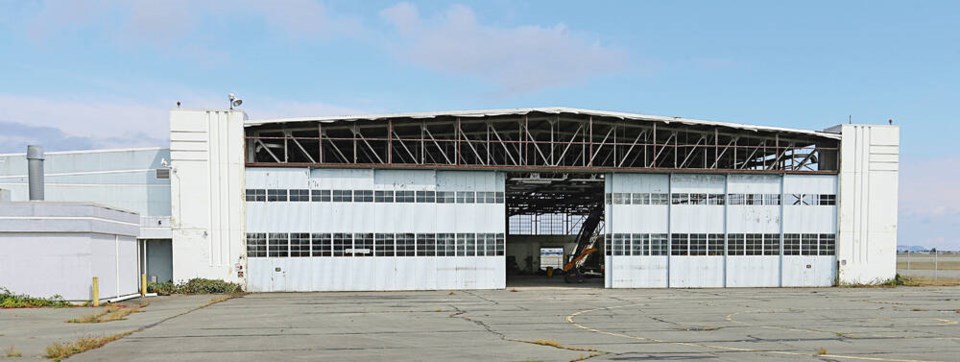A hangar built by the Royal Canadian Air Force to counter threats from the Pacific is coming down at Victoria International Airport.
West Camp, established starting in 1936 around grassy runways, was an active and important place before and during the Second World War. Formerly farmland, the camp had several hangars, buildings and barracks that supported aircraft and dozens of pilots and support crew on what would later become Victoria International Airport.
By 1941, as war unfolded in Europe and the Pacific, the British set up hangars and buildings for fliers across the airfield at East Camp, where a couple of hangars remain, including a double hangar housing Viking Air and a half hangar used by the Victoria Flying Club.
Historian Doug Rollins, a librarian at the B.C. Aviation Museum, said the two camps were active during the 1930s and 1940s for training and protection as the military moved to extend its seaplane defences from the Lower Mainland to be closer to the coast.
Very little of the Royal Air Force Station Patricia Bay remains, as the airfield gave way to the modern airport, Rollins said.
The massive West Camp Hangar being dismantled by the Department of National Defence was one of the last still standing because it was built with concrete pillars and steel trusses, and support buildings used bricks, said Rollins.
The hangars that followed in East Camp used wood because it wasn’t considered as vital to the war effort, he said. A brick administration building was torn down about a decade ago.
Rollins said the B.C. Aviation Museum inquired about using the hangar for some of its aircraft, but the building was deemed unsafe due to lead paint and asbestos, and was not up to earthquake standards.
Rod Hunchak, director of business development at Victoria International Airport, said the property is being turned over to the airport authority from the Department of National Defence for a future leased development, noting it’s adjacent to an existing taxiway.
It’s another piece of airfield history that’s disappearing.
“It’s a shrine and a beautiful building, historically,” Rollins said of West Camp Hangar. “But it costs too much to renovate and doesn’t meet earthquake standards. It’s sad news, but not unexpected.”
The current terminal at Victoria International Airport was the site of a bomb and ammunition dump, said Rollins. Near the current parking lots, there was an underground bunker in the event of a bombing raid.
And there are other remnants of the former military airfield scattered over the Peninsula.
Rollins said some barracks buildings were moved to Sidney and still stand as businesses on Beacon Avenue, while others were set up around Deep Cove.
The tall towers once used to pack parachutes are on a farm next to North Saanich Municipal Hall, said Rollins, who calls them “ghostly figures of times past.”
A home that once served as a terminal for some of the region’s first commercial flights where McDonald Park Road becomes Beacon Avenue was moved into Sidney and now sits on Seventh Street, he said.
The last units of the Royal Canadian Air Force were gone by 1952, although the air force returned in the late 1980s when 443 Helicopter Squadron set up at the airport with Sea Kings and, in 2018, with Sikorksy Cyclones, which are used in search and rescue and other missions. In 1948, Transport Canada took over the property and in 1959 it was officially named Victoria International Airport.
The history of the early airport years is documented in the book Wings Across the Water: Victoria’s Flying Heritage 1871-1971, by Elwood White and Peter Smith. It’s available to members of the B.C. Aviation Museum and for purchase online and in some bookstores. In the book, photos show the arrival of Squadron 111 at the airport in May 1940 with four Westland Lysanders, known as “Lizzies.”
One of the aircraft is shown with bomb carriers visible in its undercarriage. “When the report was received of a possible enemy submarine offshore on Jan. 4, 1941, the Lysander 416 stood by for two days with two 250-pound anti-submarine bombs,” the authors said. Four of the camouflaged Lysanders are pictured in front of the main hangar at West Camp.
>>> To comment on this article, write a letter to the editor: [email protected]



